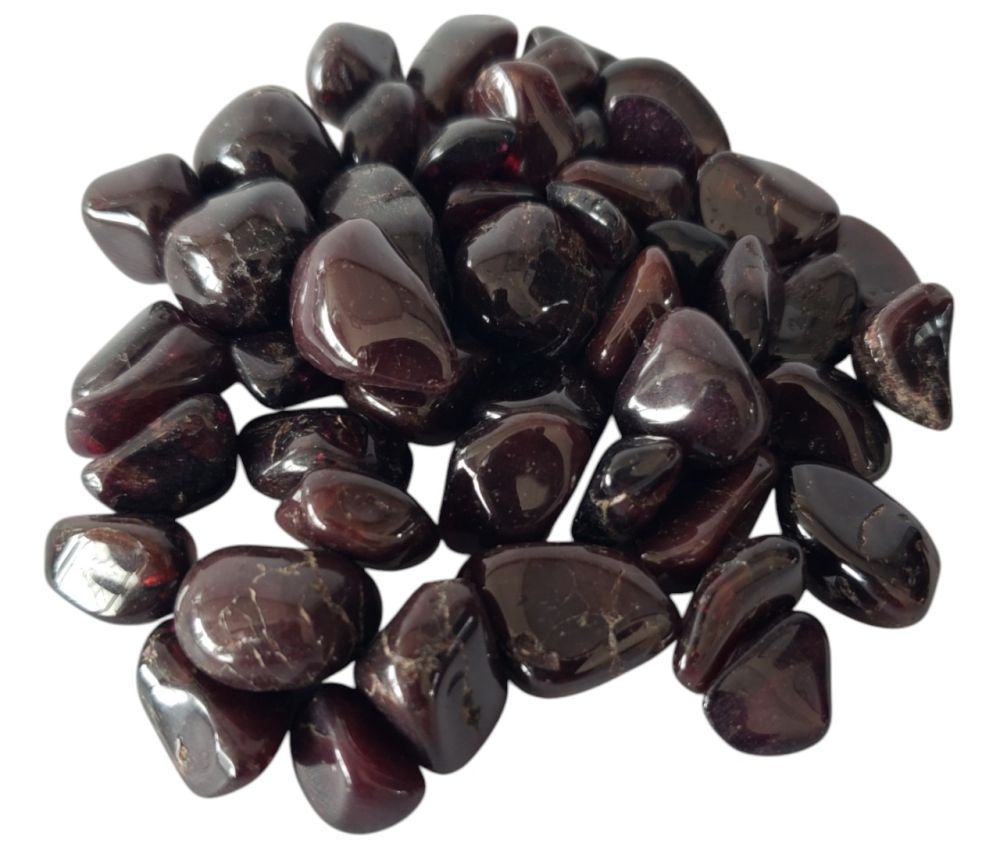We use cookies to make your experience better.
TimmersGems has a new website, existing customers also need to register again.
Garnet tumbled stones in good quality (12-15 mm) from Brazil.
The garnet boasts a stunning deep red hue and is of high quality. The gemstones originate from Brazil.
Availability:
In stock
SKU
122138
- Buy 3 for €59.00 each and save 14%
The garnet group includes minerals with a cubic crystal system and crystals in the form of rhombic dodecahedrons and trapezohedrons. They are nesosilicates with the general chemical formula A₃B₂(SiO₄)₃. Garnets can contain chemical elements such as calcium, magnesium, aluminium, iron(II), iron(III), chromium, manganese and titanium. They show no cleavage and have a hardness of 6.5 to 7.5. Garnets can vary from transparent to opaque. The term "garnet" comes from the Latin 'granatus', referring to 'malum granatum' (pomegranate), a plant with red seeds that resemble the often found garnet crystals. Garnets, contrary to popular belief and what the name suggests, are not always red. They can be purple, red, orange, yellow, green, brown, black or colourless. In 1998, a blue-pink garnet was discovered for the first time in Bekily, Madagascar, a very rare variety. The six most common varieties are pyrope, almandine, spessartite, grossular, uvarovite and andradite, which occur in two solid solution series: 1. The pyralspite group: pyrope-almandine-spessartite 2. The ugrandite group: uvarovite, grossular and andradite. Garnets are very abundant in the Earth's crust and mantle, making them important for the chemical understanding of the Earth. Garnet is also one of the "nine gems" in the Thai Order of the Nine Gems.
| Dimensions | 12-15mm |
|---|---|
| Country of Manufacture | Brazil |












